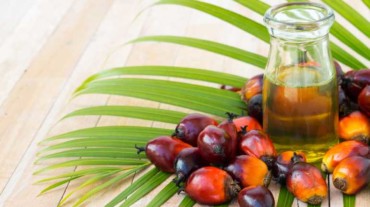
Palm oil is not typically people’s first choice when choosing a cooking oil, yet it is frequently used. This edible vegetable oil is a subject of debate for both environmental and health-related concerns. Hence, if you’re unsure whether to get rid of it or consume palm oil, let’s help you decide.
HealthShots spoke to Divya Gopal, Consultant – Dietitian/Nutritionist, Motherhood Hospitals, Banashankari, Bengaluru, to find out the pros and cons of palm oil.
Gopal says, “Palm oil has been a controversial topic for many years, with some advocating its benefits and others denouncing its negative impact on the environment and health. The answer to the question, ‘Is palm oil bad for you?’, is more complicated than saying simple yes or no.”
The fruit of oil palm trees, which are primarily cultivated in tropical areas, is used to make palm oil, a type of vegetable oil. It is used in a variety of goods, including food, cosmetics, and biofuels. Palm oil is frequently praised for its versatility, affordability, and ability to endure high temperatures without breaking down.

The production of palm oil significantly impacts the ecosystem. Plantations that produce palm oil have been connected to habitat damage, deforestation, and the displacement of indigenous communities. In addition, there is a chance that contaminants and hazardous greenhouse gasses will be released during the manufacturing of palm oil.
Gopal says, “When it comes to health, palm oil is not necessarily harmful if consumed in moderation. Its abundance in antioxidants and vitamin E may benefit heart health as well as general well-being.” Also, a 2022 study published by Food Research International supports that it may also help to decrease the progression of dementia and reduce the incidence of stroke.
Saturated fat, which has been related to a higher risk of heart disease, is high in palm oil. Nevertheless, a 2015 International Journal of Cardiology study found no evidence that palm oil increased the risk of cardiovascular issues. Even so, it isn’t the healthiest cooking oil!

Gopal says, “The answer is not straightforward. While there are advantages and disadvantages to using palm oil, it is vital to take into account the environmental effects of manufacturing as well as any potential health hazards from excessive consumption. If you decide to eat palm oil, it’s crucial to do so in moderation.”
While margarine, peanut butter, coffee creamers, cakes, chocolate, biscuits and other ready-to-eat items may include palm oil, it is also frequently used in processed goods and as a frying oil. Moreover, it can be utilized as a biofuel and is present in shampoo, soap, cosmetics, and cleaning products.
Also read: If not ghee, don’t look beyond these 7 healthy cooking oils
Select Topics of your interest and let us customize your feed.
PERSONALISE NOWUnlike olive oil or mustard oil, palm oil may not be a kitchen staple. Nonetheless, because of its high smoke point, this tropical oil is widely manufactured and many people use it to prepare many dishes. Palm oil is quite similar to other cooking oils.
According to the Department of Agriculture, in comparison to olive oil, which has 2 grams of saturated fats (which contribute to heart diseases) and 10 grams of monounsaturated fats per tablespoon, palm oil has 120 calories, 7 grams of saturated fat (the same as in butter), and 5 grams of heart-healthy monounsaturated fats per tablespoon.

One thing to note here is that palm oil has fewer saturated fats than other tropical oils like coconut oil.
Takeaway
The answer to the complex topic of whether palm oil is unhealthy must be carefully considered. While palm oil may offer health advantages, it’s still best to use it in moderation and give preference to goods with sustainable sourcing.